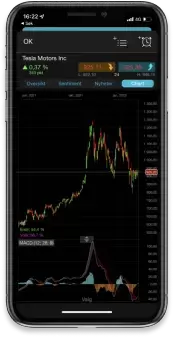The US dollar had a volatile month in July amid mixed events and economic data. The dollar index fell initially following lighter-than-expected US inflation data, then sharply rebounded following a slew of positive US economic data, which may pave the way for a soft-landing US economy. The headline CPI printed at 3% year on year in June, and the US advanced GDP rose to 2.4% in the second quarter from 2% in the prior quarter. The recent economic playout may have increased the odds for the Fed to keep the interest rate higher for longer. However, the recent rebound in the US dollar may not endure due to the increasing risks ahead, which could be the bond jitter, the deteriorating US manufacturing activities, and a slowdown in company earnings growth. And the Fed may not be able to avoid quitting its hiking campaign due to all the above economic events.
The government bonds reflect the trend in the currency markets
The government bond yields mirror the central banks’ monetary policy path. And the 10-year tenure is seen as a benchmark indicator measuring the overall health of the economy and can serve as an important signal for current and future economic conditions. It reflects investor confidence in the government's ability to repay its debt obligations, and it provides essential information about interest rates and inflation expectations. Usually, currency trends are associated with the movement in bond yields. A jump in bond yields suggests a strong expectation for the central bank to raise the interest rates, and vice versa. The reason behind the rebound in the US dollar recently can be tributed to two major economic events. One is the Bank of Japan’s policy tweak, making its 10-year government bond yield cap more flexible, which caused a jump in the US government bond yield. The second event is Fitch’s US credit downgrade, also causing a risk-aversion trade in the currency markets. The US dollar strengthened following the two events as a safe haven currency.
The below charts are the 10-year bond yields of the US, the UK, the EU, Japan, Australia, and New Zealand. Since March 2022, three countries’ government bond yields have moved more significantly than the others, which are the UK, the EU, and Japan. Especially the EU and Japanese 10-year government bond yields jumped from minus to 2.5% and 0.65%, respectively. The Eurodollar and Japanese Yen have also experienced a significant surge against the US dollar in the past few months, but the Japanese stock market’s rally pressured the Yen. However, the policy normalization of the BOJ will likely strengthen the Japanese Yen again and push down the USD/JPY.

An end of the Fed rate hike cycle may lead to a further decline in the USD
In fact, the US dollar had topped out and started its downtrend from October 2022, when investors believed that the US CPI had hit a peak. The Fed scaled back its rate hike to 50 basis points from 75 basis points in December 2022, followed by a further slowdown of 25 basis points in February 2023. Now that the Fed is very close to completing the hiking cycle, which may start forcing other central banks to bring an end to raising their interest rates as a jump in the exchange rates in the regional currencies will have a negative impact on exports, especially for those trade surplus countries, such as Australia and New Zealand. However, inflation remained high in the other major Western economies, which may promote these central banks to keep their hawkish stance. Both Australia and New Zealand’s headline CPI are at 6%, UK’s inflation is at 7.9%, and the EU’s CPI is at 5.3%. All these levels are higher than their US peer. Hence, the US dollar’s weakness may extend in the second half of the year till other major economies are done with their jobs. A sooner pivot Fed and a longer hiking cycle by the other banks may continue to press the US dollar against the other major currencies. The trend can also be reflected in these economies’ government bond yields.
In history, the US dollar index had a positive correlation with the Fed Funds rate and the US 10-year government bond yield. Since the Fed’s policy rate is close to hitting a peak, the USD will likely stay in its downtrend, despite the rebound since mid-July. The below chart illustrates that the US dollar usually hits a peak when the Fed Funds Rate and the US bond yield both reverse their uptrends.

Disclaimer: CMC Markets is an execution-only service provider. The material (whether or not it states any opinions) is for general information purposes only, and does not take into account your personal circumstances or objectives. Nothing in this material is (or should be considered to be) financial, investment or other advice on which reliance should be placed. No opinion given in the material constitutes a recommendation by CMC Markets or the author that any particular investment, security, transaction or investment strategy is suitable for any specific person. The material has not been prepared in accordance with legal requirements designed to promote the independence of investment research. Although we are not specifically prevented from dealing before providing this material, we do not seek to take advantage of the material prior to its dissemination.




